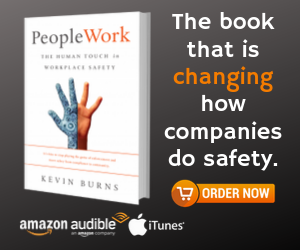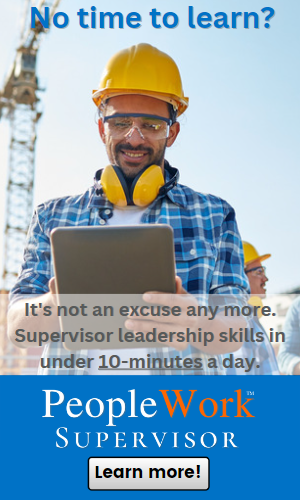Top 3 Areas To Influence Safety
The frontlines are where the largest numbers of employees gather each day. It’s where the greatest number of supervisors do their jobs, where the greatest amount of activity is. It’s where the most problems happen and where the largest numbers of safety incidents occur.
At the frontline is where the morale and reputation of the organization is created and upheld. It’s at the frontline where effective supervisory skills, clear communications, and employee buy-in to safety are needed most.

Companies are spending too much time and too much money with inconsistent and ineffective communications trying to engage their employees and supervisors in taking ownership of the safety program.
When faced with issues like lack of employee and supervisory buy-in to safety, the conventional approach is to double-down on safety rules and process enforcement. But you don't fix recurring safety issues by piling on more safety.
Instead, what is needed are new innovations and approaches to build employee and supervisory ownership of safety. And, you to do that you must clarify your safety communications and messaging.
Top 3 Areas to Influence Safety
There are three specific areas where you can influence the greatest amount of positive change in safety.
1. Employee participation in safety.
Companies talk about wanting to get their employees to take ownership of the safety program but then either don’t know how to do it or simply expect employees to step up and do it. But employees don’t know what you want them to do specifically. And most times, you’re not telling them specifically what owning the safety program actually looks like.
Ask ten people to think of a dog and you will likely get ten different breeds. Likewise, ask ten people what ownership of safety looks like and you’ll get ten different responses. You’re not being specific in what you you’re asking your people to do, how to act, how to support each other. And if you’re not clear on your expectations, they are unclear as to what they are supposed to do to “own” the safety program.
So, the first place to go to work is to clarify what specifically you want your people to do that they are not doing now. Our live streaming programs can help you drive better employee participation in safety.
2. Supervisor training and coaching.
No longer is technical expertise or experience the key driver of the ideal supervisor. Employees want to work with supervisors who can coach, listen, communicate, empower, and help with career development. Someone who also cares about the wellbeing of the employee and who has a vision and strategy for the team.
Employees place less importance on a supervisor’s experience and more on their people skills. The best supervisors have made the shift from process to people. The human element carries more weight in safety discussions, planning, and protocols. Supervisors and safety people who continue to focus on enforcing rules while ignoring people, will see employees push back.
Supervisors must focus on demonstrating how much they value their people. The SCCS Program for supervisors can help.
3. Clarify your safety communications.
Most organizations admit that they could be doing a better job of communicating with their employees. Sadly, safety communications usually revolve around numbers: TRIF rates, LTI scores, etc. That’s not communicating. That’s reviewing stats.
Stats don’t motivate employees to rally around safety and to take ownership of the safety program. Numbers don’t connect with employees and communicate exactly what we would like them to do.
Safety communications need to be clear, specific and need to resonate with employees. Until you do that, you will not get buy-in to safety nor will you be able to rally your team around safety. The RYT Program was created to accomplish exactly that.
Safety isn't a thing you do.
You say you want employees to embrace the safety program. But it's hard for employees to do that when safety is presented in terms of only protocols, paperwork and procedures.
Truthfully, we don't need more safety rules, processes or procedures. We need more employees to buy-in to what we are trying to do in safety. That takes a very different set of skills, tools and strategies.
When communications, employees, and supervisory struggle, so does safety performance. You can't fix safety if you don't first fix the issues above. Once supervisory, employee participation, and clear communications are addressed, you will find safety performance follows.
Safety isn't a thing you do. It's a result you get when everyone in the organization is doing the right things.
--
Kevin Burns is the President/CEO of KevBurns Learning. Kevin works with smart, caring companies to energize safety culture, build teamwork, and improve employee participation in safety.
In 2020, BookAuthority.org named PeopleWork #7 of The Top 44 Workplace Safety Books of All Time. Buy yourself a copy of PeopleWork: The Human Touch in Workplace Safety and give another as a gift to a colleague.
Subscribe to Kevin’s Blog.





